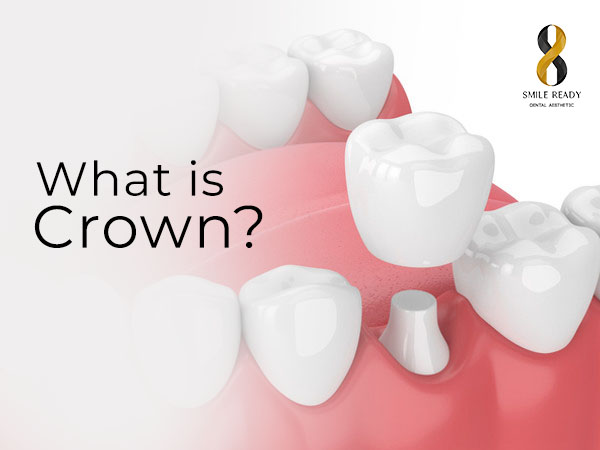
A crown, also called a cap, is an artificial tooth that is used to replace a decayed tooth. It is placed on top of the gum to cover the cleaned remains of a damaged tooth, and thus acts as the new outer surface of the said tooth.
Different dental crowns are made available to patients and these include the following:
- Stainless steel
These crowns are often used as a temporary solution while another permanent type of crown is being fabricated. Stainless steel crowns are known for their cost-effectiveness, but they are not used as permanent crowns because they do not look like real teeth.
- Metals such as gold, palladium, or nickel
Metal crowns are the most commonly used crowns; they are known for their durability as the metal can withstand constant biting and chewing. Another benefit of metal crowns is that only a thin layer of the tooth structure has to be removed in order to place them. The only major disadvantage is its metallic color. Thus, metal crowns are most commonly used for molars that are hidden from view.
- Porcelain-fused-to-metal
These are metal crowns that are fused to a layer of porcelain to make them look like real teeth. The porcelain layer can be matched in color to the adjacent teeth. However, porcelain is less durable and can easily break or chip off. The metal under the porcelain layer can also show through over time, causing a dark area to form near the gum line.
- All-ceramic crown
An all-ceramic crown is made completely of porcelain. Its main advantage is that your crown will look almost exactly like your natural teeth, so people will never guess that you had a crown placed. This is because of the translucent color of porcelain. And since it is also made of porcelain on the inside, no dark line will form. Due to their aesthetic appearance, all-ceramic crowns are most recommended for front teeth replacement.
- All-resin
An all-resin crown is the most affordable type of crown. They are, however, very prone to breaking and are vulnerable to wear and tear.
- Zirconia crown
A zirconia crown is an advanced type of dental cap that does not need an impression to be produced. It is digitally fabricated using special software and hardware; thus, if you are interested in a zirconia crown, you will have to look for a dental clinic that is fully equipped to provide this type of crown.
- Cause of condition
Tooth decay is the number one reason why most people get crowns. The following factors will put a tooth at risk of decay:
- Failure to brush or floss teeth on a regular basis
- Failure to go to the dentist regularly for cleanings and check ups
- Inadequate fluoride intake
- Consumption of high-sugar and high-carbohydrate food; this is because sugar and carbohydrates feed the bacteria that is present in the mouth
- Inadequate saliva production (such as in the case of people suffering from xerostomia or dry mouth syndrome); saliva plays an important role in washing away food residue and sugars that are harmful to the teeth
- Diabetes
- Smoking
- Breathing secondhand smoke
- Consumption of acidic food and beverages
Key symptoms
The following symptoms will tell you when you may need a crown:
- If you have severely decayed teeth that cannot be repaired with a filling
- If you have severely damaged tooth with topmost part that has to be removed
- If you have a defective filling that has to be repaired or covered
- If you have unpleasant-looking tooth, such as misshapen or discolored tooth, and you want to improve its appearance by covering it with a new outer surface
- If you have a weakened or cracked tooth
- If you need to get a dental bridge
To determine whether you have a decayed tooth, watch out for the following symptoms:
- A toothache
- Swollen gums near the area of a painful tooth
- Bad taste in the mouth
- Bad breath
- Discoloration on the teeth surface
The following symptoms, on the other hand, will tell you when to see your dentist for a check up and maintenance of your crown:
- Tooth sensitivity that gets worse when biting
- Tooth pain or discomfort, especially when you bite down
- Chipped crown
- Loose crown
- When the crown falls off
- Dark line near the gum line
Who to see & types of treatments available
If you experience any of the symptoms above, you may have decayed tooth and may need to get a crown.
To have a crown placed, you will need to visit your dentist’s office for a minimum of two times. On your first visit, the dentist will apply a local anesthetic and safely drill out the decayed parts of your tooth. He will then clean the remaining part of your tooth then take an impression for the fabrication of the crown. If necessary, a temporary crown will be placed over the damaged tooth.
Your second visit is dedicated to the placement of the permanent crown. Once the temporary crown is removed, your dentist will cement your permanent crown on. He will end the procedure by reshaping and polishing the crown.
In some cases, getting a crown will require more visits. One common instance is when the tooth is decayed near the pulp; if so, your dentist will have to remove the damaged pulp and the nerve of the tooth through a root canal therapy. After the root canal, the remaining tooth can then be fitted with a crown. But since a root canal is considered as a surgical procedure, you will need another visit to allow the tooth and gums to heal first before the crown can be placed.
After the procedure, it is normal to feel some numbness around your mouth and gums as the anesthetic slowly wears off.
Crowns have a high success rate, and you can use them comfortably just like real, healthy teeth for a long time. They are known to last anywhere between 5 and 15 years, depending on usage level, hygiene, and habits, such as teeth grinding and nail-biting, among others. Due to wear and tear, it may come loose, but this usually occurs after a long period of usage. If this happens, you just need to have it cemented again by your dentist, or you can also have it replaced.


